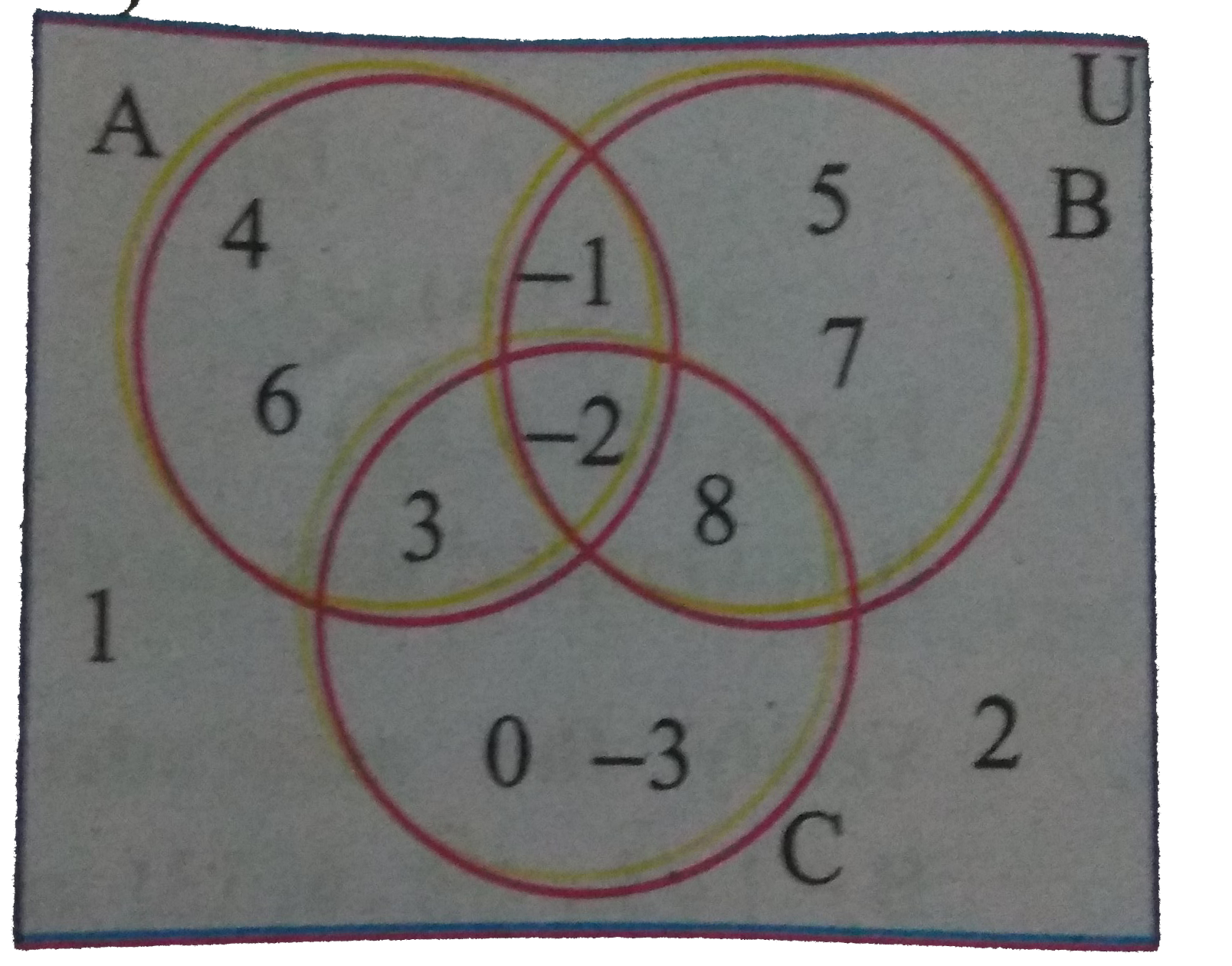Verify n(A∪B∪C)=n(A)+n(B)+n(C)−n(A∩B)−n(B∩C)−n(A∩C)+n(A∩B∩C) for the following sets.
(i) A{a, c, e, f, h}, B = {c, d, e, f} and C = {a, b, c, f}
(ii) A = {1, 3, 5} B = {2, 3, 5, 6} and C = {1, 5, 6, 7}.Solution in Tamil
Step by step video & image solution for Verify n(AcupBcupC)=n(A)+n(B)+n(C)-n(AcapB)-n(BcapC)-n(AcapC)+n(AcapBcapC) for the following sets. (i) A{a, c, e, f, h}, B = {c, d, e, f} and C = {a, b, c, f} (ii) A = {1, 3, 5} B = {2, 3, 5, 6} and C = {1, 5, 6, 7}. by Maths experts to help you in doubts & scoring excellent marks in Class 9 exams.
Updated on:21/07/2023Topper's Solved these Questions
- SET LANGUAGEBOOK - SURA PUBLICATIONCHAPTER - SET LANGUAGEEXERCISE - EXERCISE 1.7
26 Videos
- SET LANGUAGEBOOK - SURA PUBLICATIONCHAPTER - SET LANGUAGEEXERCISE - TEXT BOOK ACTIVITIES
2 Videos
- SET LANGUAGEBOOK - SURA PUBLICATIONCHAPTER - SET LANGUAGEEXERCISE - EXERCISE 1.5
19 Videos
- REAL NUMBERS BOOK - SURA PUBLICATIONCHAPTER - REAL NUMBERS EXERCISE - UNIT TEST
19 Videos
- STATISTICSBOOK - SURA PUBLICATIONCHAPTER - STATISTICSEXERCISE - Section -C
2 Videos
Similar Questions
Which of the following is correct?
View SolutionDiscuss and give as many examples of collections from your daily life situations, which are sets and which are not sets.
View SolutionUsing the adjacent venn diagram, find the following sets :

(i) A - B
(ii) B - C
(iii) A'∪B'
(iv) A'∩B'
(v) (B∪C)'
(vi) A−(B∪C)
(vii) A−(B∩C)
View SolutionWhich one of the following , regarding sum of two irrational number , is true ?
View SolutionCalculate the mean of the following distribution using Assumed Mean Method.

View SolutionLet A and B be two sets such that n(A)=5 and n(B)=2, if a, b, c, d, e are distinct and (a,2), (b,3), (c,2), (d,3), (e,2) are in A×B , find A and B.
View Solutionif a,b,c,d,e and f are six real numbers such that a+b+c=d+e+f a2+b2+c2=d2+e2+f2 and a3+b3+c3=d3+e3+f3 , prove by mathematical induction that an+bn+cn=dn+en+fn∀n∈N.
View SolutionIf n(A)=10,n(B)=6andn(C)=5 for three disjoint sets A,B,C then n(A∪B∪C) equals
View SolutionLet A={b,d,e,g,h}andB={a,e,c,h} verify that n(A−B)=n(A)−n(A∩B)
View SolutionLet A = {b, d, e, g, h} and B = {a, e, c, h} verify that n(A−B)=n(A)−n(A∩B)
View SolutionVerify n(A∪B∪C)=n(A)+n(B)+n(C)−n(A∩B)−n(B∩C)−n(A∩C)+n(A∩B∩C) for the following sets A = {1, 3, 5, 6, 8}, B = {3, 4, 5, 6) and C = {1, 2, 3, 6}
View SolutionIf A , B and C are three non - empty finite sets such that n (A) =19 , n (B) = 15 , n (C ) =17, n(∩B)=11,n(B∩C)=6,n(C∩A)=7andn(A∩B∩C)=5. Also n (U) =50.
(i) n(A∩Bc∩Cc)
(ii) n(B∩Cc∩Ac)
(iii) n(C∩Ac∩Bc)
(iv) n(C∩B∩Cc)
(v) n(B∩C∩Ac)
(vi) n(C∩A∩Bc)
(vii) n(A∪B∪C)
(viii) n((A∪B∪C)c).
View SolutionFor any three sets A,B C, prove that :
n(A∪B∪C)=[n(A)+n(B)+n(C)+n(A∩B∩C)]−[n(A∩B)+n(B∩C)+n(A∩C)].
View Solution(n(A ∪ B ∪ C))=n(A)+n(B)+n(C)-n(A ∩ B)-n(B ∩ C)-n(A ∩ C)+n(A ∩B∩ C) என்பதைக் கீழ்க்காணும் கணங்களுக்குச் சரிபார்க்க ? A{a,c,e,f,h},B={c,d,e,f}மற்றும் C={a,b,c,f}
View SolutionIf a:b=c:d=e:f then (pa+qc+re):(pb+qd+rf) is equal to
View Solution
